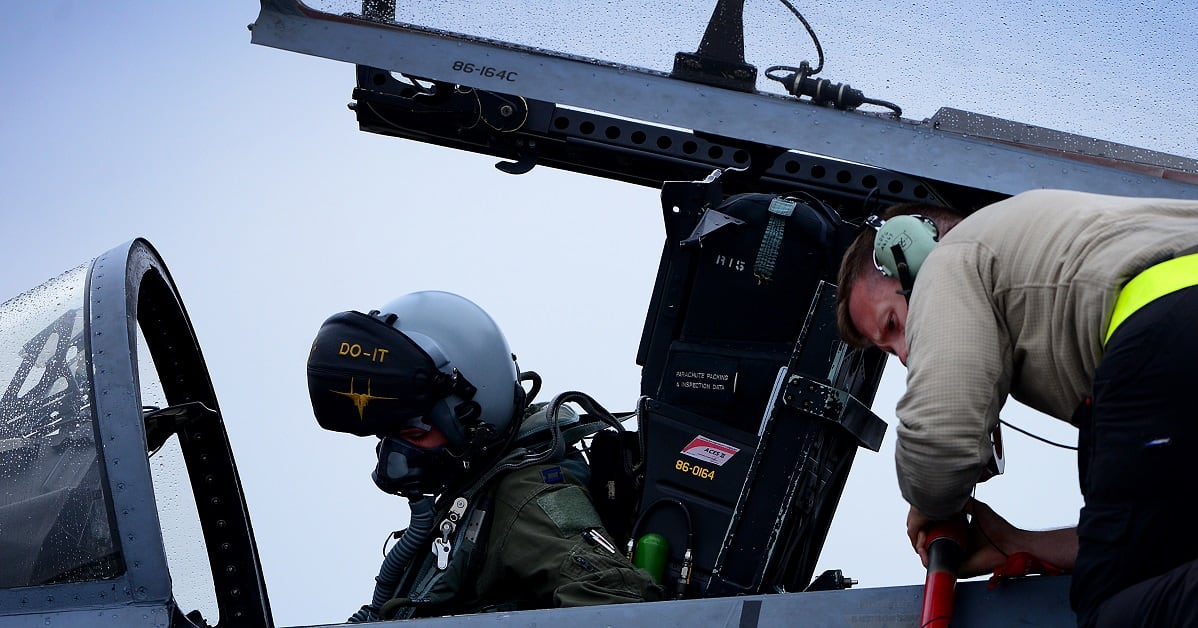AMARI AIR BASE, Estonia — Over the past decade, Estonia has watched Russia get better at coordinating its military activities. And that’s a concern for the outgoing Estonian air force chief, who worries that NATO’s response may not come quick enough during a conflict.
"We know that NATO will act. Period. But, yes, there is some concern about how fast the first reaction will occur because of the nature of independent countries cooperating,” Col. Riivo Valge, head of the Estonian air force, told Defense News July 13 in an exclusive interview.
When comparing Russia’s attacks in Georgia in 2008 to its use of military force today, Russia has gotten more skilled in coordinating its joint force, air operations and propaganda, Valge said. But one challenge is that NATO member countries perceive Russia’s behavior differently, and thus have differing ideas on what constitutes an actionable threat.
RELATED

"I believe, when we get our act together, we will be better [than Russia],” he said. “It's just hard to get our act together sufficiently."
Step one for improving NATO’s response time? Valge said he would like to see more exercises with the United States and its other allies, and that those training opportunities are more closely integrated.
Estonia is also interested in bolstering its air defenses, and is considering jointly developing and buying a system with the other Baltic states, Latvia and Lithuania.
“If we develop that kind of capability, if it's absolutely vital that is integrated and used to operate together with the U.S. and other NATO allies' flying forces. Therefore we must be careful not to create something that doesn't speak with each other very well,” he said.
Estonia has consistently spent 2 percent of its gross domestic product on its military to meet NATO spending commitments, and has pledged to retain that level of commitment until at least 2023, according to Janes. However, its air force is small and with limited capability.
RELATED

Aside from a handful of ground-based or ground-mobile radar, the air force operates a small number of Aero L-39 trainers and Robinson R44 helicopters. It cannot afford fighter aircraft — and will not be able to for the foreseeable future, Valge said — and thus depends on NATO allies for air policing.
U.S. Air Force Chief of Staff Gen. Dave Goldfein, who visited Estonia for the first time on Saturday, said one of his priorities was to reassure officials like Valge that the United States stands ready to come to the aid of its NATO allies — a message Goldfein said Valge understood.
“But the area he might be referring to is the hybrid nature of operations, where its not an all-out campaign. It’s the little green men story again. Does that trigger a response in time for their needs? I could see where he would have that concern,” he said.
However, Goldfein said that his job is to ensure that the U.S. Air Force is ready and capable to respond to a contingency, if needed, not to manage policy decisions.
“I don’t worry too much about the political policy side, nor should I. I do concern myself with making sure to meet Gen. Wolters’ timelines,” he said, referring to Gen. Tod Wolters, NATO’s commander in Europe and head of U.S. European Command. “When he says, ‘I need you to send X,’ I need to have it ready and it has to be fully capable of taking on the missions it needs.”
This week, Valge is anticipated to hand over command of the Estonian air force to Col. Rauno Sirk, currently the director of Estonia’s Center for Defense Investment, according to The Baltic Times.
Valerie Insinna is Defense News' air warfare reporter. She previously worked the Navy/congressional beats for Defense Daily, which followed almost three years as a staff writer for National Defense Magazine. Prior to that, she worked as an editorial assistant for the Tokyo Shimbun’s Washington bureau.








